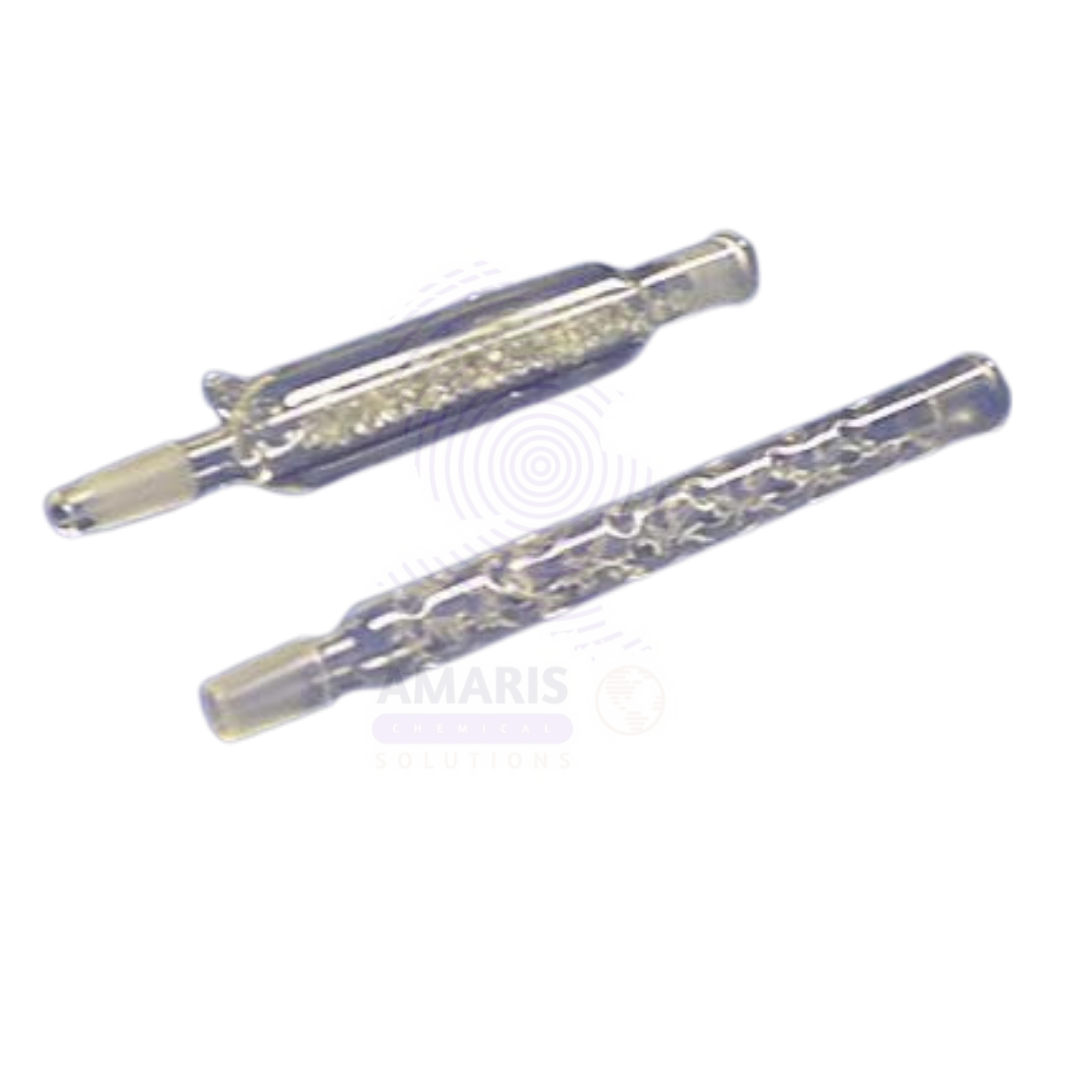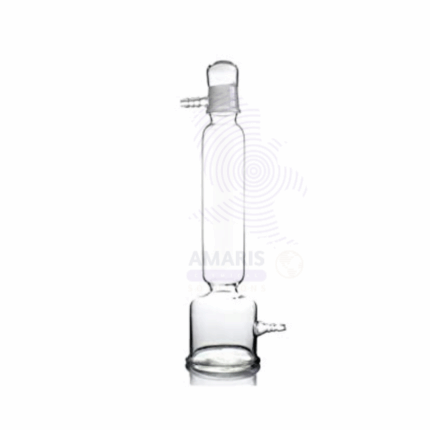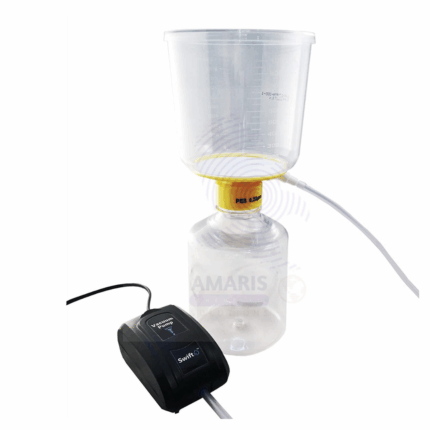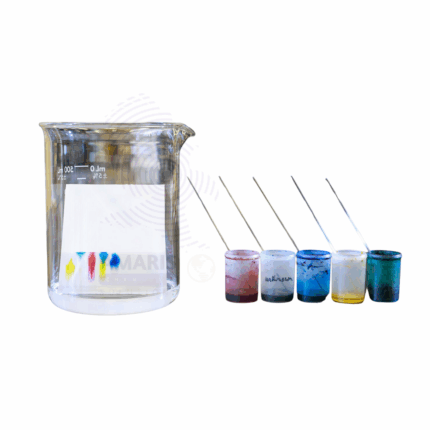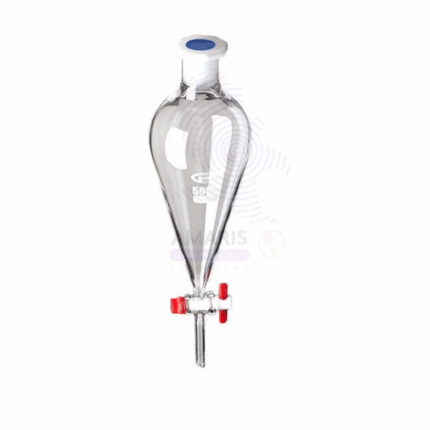Fractionating Column
$ 19.99 Original price was: $ 19.99.$ 19.87Current price is: $ 19.87.
Fractionating Column is a laboratory apparatus used in distillation processes to separate liquid mixtures into their individual components based on differences in boiling points. It consists of a vertical glass or metal tube filled with packing material or internal trays that increase surface area, promoting repeated condensation and vaporization cycles (fractionation). This allows for more efficient separation of close-boiling compounds. Fractionating columns are commonly used in organic chemistry labs, chemical processing industries, and educational institutions. Their design can vary from simple glass tubes to complex industrial towers, but all serve the essential function of improving separation efficiency in distillation systems.
Fractionating Column
Primary Uses
- Chemical and Laboratory Applications
- Separation of close-boiling point components in liquid mixtures through fractional distillation.
- Used in organic chemistry labs for purification of synthesized compounds.
- Supports solvent recovery and separation in laboratory-scale chemical operations.
- Applied in analytical chemistry for component isolation and identification.
- Essential for teaching fractional distillation principles in academic laboratories.
- Pharmaceutical and Research Applications
- Used in pharmaceutical manufacturing for precise separation of active ingredients or solvents.
- Supports R&D activities in formulation, synthesis, and purification.
- Helps isolate natural extracts or essential oils with overlapping boiling points.
- Enables purification of sensitive compounds under controlled conditions.
Secondary Uses
- Industrial and Environmental Applications
- Utilized in pilot plants and small-scale production for process optimization studies.
- Applied in environmental labs for separating volatile organic compounds (VOCs).
- Supports the separation of alcohols, esters, or hydrocarbons in industrial processes.
- Used in fuel refining processes for separating petroleum components in a controlled lab setting.
- Instructive tool for vocational training in chemical engineering and process industries.
1.Basic Identification Attributes
- Material: Borosilicate glass (lab-scale), stainless steel or alloys (industrial)
- Design: Packed column or tray column depending on application
- Features: Connectors for distillation flask and condenser, optional thermometer ports
2.Physical & Chemical Properties
- High thermal resistance suitable for heating and cooling cycles
- Chemically resistant to solvents, acids, and organic compounds
- Internal packing or trays improve surface contact and separation efficiency
3.Safety & Hazard Attributes
- Fragile glass components can break under thermal or mechanical stress
- Must be securely clamped during operation to prevent tipping or leaks
- Vaporized chemicals may be hazardous—proper ventilation is required
4.Storage & Handling Attributes
- Store in padded, stable compartments to avoid damage
- Clean and dry thoroughly after use to avoid contamination buildup
- Handle with gloves to maintain cleanliness and prevent breakage
5.Regulatory & Compliance Attributes
- Conforms to laboratory glassware and safety standards (e.g., ISO, ASTM)
- Suitable for use in GMP/GLP compliant laboratories and institutions
6.Environmental & Health Impact
- Promotes cleaner chemical processing by improving separation and reducing waste
- Glass components are recyclable; proper handling reduces chemical emissions
Safety Handling Precautions
- Use gloves, eye protection, and lab coat during distillation procedures
- Ensure all joints are sealed to prevent vapor leaks
- Monitor temperature to avoid overheating or overpressure situations
First Aid Measures
- In case of chemical vapor inhalation, move to fresh air and seek medical assistance
- For glass cuts, disinfect and bandage wound; seek help if severe
- Handle any chemical spills using appropriate spill kits and protocols
Firefighting Measures
- Glass and metal are non-flammable, but substances used may be flammable
- Use extinguishers suitable for surrounding flammable materials
- Remove heat sources immediately if overheating occurs during use


 Preservatives(food)
Preservatives(food) Flavor Enhancers
Flavor Enhancers Acidulants
Acidulants Sweeteners
Sweeteners Antioxidants
Antioxidants Colorants(food)
Colorants(food) Nutraceutical Ingredients (food)
Nutraceutical Ingredients (food) Nutrient Supplements
Nutrient Supplements Emulsifiers
Emulsifiers
 Collectors
Collectors Dust Suppressants
Dust Suppressants Explosives and Blasting Agents
Explosives and Blasting Agents Flocculants and Coagulants
Flocculants and Coagulants Frothers
Frothers Leaching Agents
Leaching Agents pH Modifiers
pH Modifiers Precious Metal Extraction Agents
Precious Metal Extraction Agents
 Antioxidants(plastic)
Antioxidants(plastic) Colorants (Pigments, Dyes)
Colorants (Pigments, Dyes) Fillers and Reinforcements
Fillers and Reinforcements Flame Retardants
Flame Retardants Monomers
Monomers Plasticizers
Plasticizers Polymerization Initiators
Polymerization Initiators Stabilizers (UV, Heat)
Stabilizers (UV, Heat)
 Antifoaming Agents
Antifoaming Agents Chelating Agents
Chelating Agents Coagulants and Flocculants
Coagulants and Flocculants Corrosion Inhibitors
Corrosion Inhibitors Disinfectants and Biocides
Disinfectants and Biocides Oxidizing Agents
Oxidizing Agents pH Adjusters
pH Adjusters Scale Inhibitors( water)
Scale Inhibitors( water)
 Antioxidants(cosmetic)
Antioxidants(cosmetic) Emollients
Emollients Fragrances and Essential Oils
Fragrances and Essential Oils Humectants
Humectants Preservatives
Preservatives Surfactants(cosmetic)
Surfactants(cosmetic) Thickeners
Thickeners UV Filters
UV Filters
 Fertilizers
Fertilizers Soil Conditioners
Soil Conditioners Plant Growth Regulators
Plant Growth Regulators Animal Feed Additives
Animal Feed Additives Biostimulants
Biostimulants Pesticides (Herbicides, Insecticides, Fungicides)
Pesticides (Herbicides, Insecticides, Fungicides)
 Active Pharmaceutical Ingredients (APIs)
Active Pharmaceutical Ingredients (APIs) Excipients
Excipients Solvents(pharmaceutical)
Solvents(pharmaceutical) Antibiotics
Antibiotics Antiseptics and Disinfectants
Antiseptics and Disinfectants Vaccine Adjuvants
Vaccine Adjuvants Nutraceutical Ingredients (pharmaceutical)
Nutraceutical Ingredients (pharmaceutical) Analgesics & Antipyretics
Analgesics & Antipyretics
 Analytical Reagents
Analytical Reagents Solvents(lab)
Solvents(lab) Chromatography Chemicals
Chromatography Chemicals Spectroscopy Reagents
Spectroscopy Reagents microbiology-and-cell-culture-reagents
microbiology-and-cell-culture-reagents Molecular Biology Reagents
Molecular Biology Reagents Biochemical Reagents
Biochemical Reagents Inorganic and Organic Standards
Inorganic and Organic Standards Laboratory Safety Chemicals
Laboratory Safety Chemicals Specialty Laboratory Chemicals(Special Laboratory Equipment)
Specialty Laboratory Chemicals(Special Laboratory Equipment)
 Demulsifiers
Demulsifiers Hydraulic Fracturing Fluids
Hydraulic Fracturing Fluids Scale Inhibitors(oil)
Scale Inhibitors(oil) Surfactants(oil)
Surfactants(oil) Drilling Fluids
Drilling Fluids
 Dyes and Pigments
Dyes and Pigments Bleaching Agents
Bleaching Agents Softening Agents
Softening Agents Finishing Agents
Finishing Agents Antistatic Agents
Antistatic Agents
 Admixtures
Admixtures Waterproofing Agents
Waterproofing Agents Sealants and Adhesives
Sealants and Adhesives Curing Compounds
Curing Compounds Concrete Repair Chemicals
Concrete Repair Chemicals Anti-Corrosion Coatings
Anti-Corrosion Coatings
 Surfactants(cleaning)
Surfactants(cleaning) Builders
Builders Enzymes
Enzymes Solvents (Cleaning)
Solvents (Cleaning) Fragrances
Fragrances
 Electronic Chemicals
Electronic Chemicals Catalysts
Catalysts Lubricants
Lubricants Photographic Chemicals
Photographic Chemicals Refrigerants
Refrigerants Automotive chemicals
Automotive chemicals Pyrotechnic Chemicals
Pyrotechnic Chemicals
 Biodegradable Surfactants
Biodegradable Surfactants Bio-based Solvents
Bio-based Solvents Renewable Polymers
Renewable Polymers Carbon Capture Chemicals
Carbon Capture Chemicals Wastewater Treatment Chemicals
Wastewater Treatment Chemicals
 Pigments
Pigments Solvents(paint)
Solvents(paint) Specialty Coatings
Specialty Coatings Binders/Resins
Binders/Resins Additives
Additives Driers
Driers Anti-Corrosion Agents
Anti-Corrosion Agents Functional Coatings
Functional Coatings Application-Specific Coatings
Application-Specific Coatings
 Fresh Herbs
Fresh Herbs Ground Spices
Ground Spices Whole Spices
Whole Spices Spice Blends
Spice Blends Dried Herbs
Dried Herbs
 Leavening Agents
Leavening Agents Dough Conditioners
Dough Conditioners Flour Treatments
Flour Treatments Fat Replacers
Fat Replacers Decoratives
Decoratives Preservatives(baking)
Preservatives(baking)
 Plasticizers & Softeners
Plasticizers & Softeners Reinforcing Agents
Reinforcing Agents Adhesion Promoters
Adhesion Promoters Vulcanizing Agents
Vulcanizing Agents Antidegradants
Antidegradants Blowing Agents
Blowing Agents Fillers & Extenders
Fillers & Extenders Accelerators & Retarders
Accelerators & Retarders